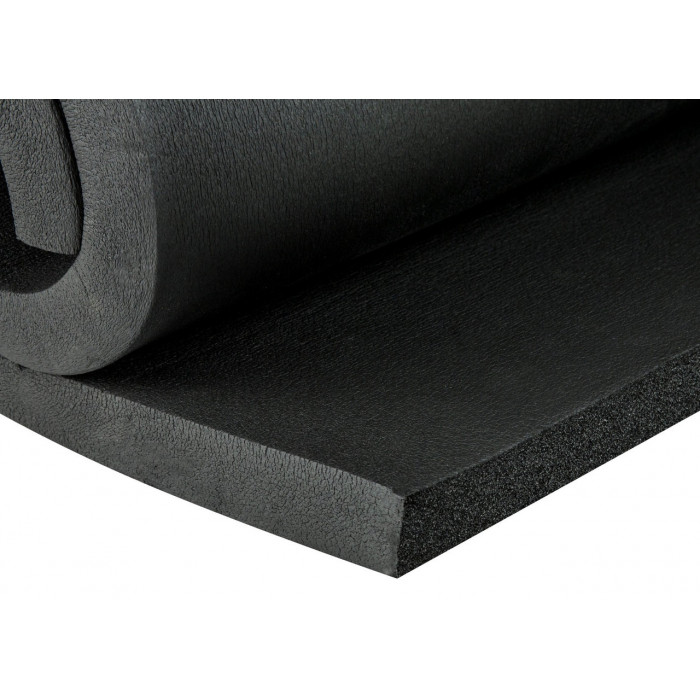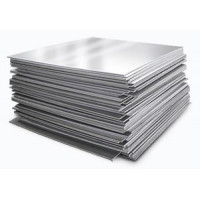Chernivtsi rubber products - porous rubber (spongy), microporous rubber, silicone rubber, vacuum rubber, food rubber, fiber
Porous rubber (the name “spongy, foamed, cellular rubber” is acceptable) is an elastic porous material obtained on the basis of mixtures with a high rubber content. The main component of porous rubber is often recycled rubber. This very budgetary and at the same time high-quality material, in turn, is obtained from automobile tires and rubber products. They are the source of that very high-quality rubber, which largely determines the basic functional properties of cellular rubber.
Characteristics
In order to most fully answer the question of what porous rubber is, you need to understand in more detail the main characteristics that this material is endowed with.
From 20 to 80% of the volume of foamed rubber are pores. Their size can vary from 0.4 µm to 0.4 mm. The pores in sponge rubber are:
communicating or open;
closed;
mixed type.
It is thanks to the pores present in the structure of the material that foam rubber products have an incredibly soft structure and almost imperceptible weight.
There are three main varieties of porous rubber (usually black):
Autoclave. With a density of 150-560 kg / m³, its thickness varies from 3 to 80 mm. Important: the production of rubber with a thickness of more than 12 mm. involves gluing two plates of the same brand. The operating temperature range of autoclaved rubber is from -35℃ to +65℃. When stretched, it lengthens by 130-150%. Shelf life - at least 10 years.
Press rubber of group I. With a density of 300-560 kg / m³, this type of rubber has a thickness of 5 to 55 mm. If the thickness of the press material exceeds 20 mm, then gluing rubber layers is also used in its production. This material is extended by 150% of the original size. Operating temperatures: -40℃ to +65℃. At the same time, the shelf life is on average 7-8 years.
Press rubber of II group. This material is characterized by a density of 520-860 kg / m³, thickness from 3 to 25 mm. The press rubber of the second group is lengthened by 130-150% of the original size. At operating temperatures from -40℃ to +70℃, products made from this type of rubber can last up to 10-12 years.
Foamed silicone rubber (usually white) made from recycled silicone stands apart. It, produced in the form of sheets and rolls with a thickness of 2-60 mm, is characterized by increased flexibility and softness. Produced in accordance with GOST R 57399-2017, silicone rubber has the widest operating temperature range (from -50℃ to +270℃), the ability to elongate by 250%, and a long service life (10 years).
Production technology
The technology for the production of sponge rubber involves heating at high temperatures all of its constituent components - directly rubber, fillers, vulcanizers and special organic (more active and efficient in nature) and inorganic formers of the porous structure of the final material. It is thanks to the latter that the resulting rubber contains gas and foam. Vulcanization of the composition usually occurs due to its placement in salt melts or fiery air currents.
Depending on the purpose of the products obtained, experts identify several ways to organize the technological production process:
Vulcanization of components in an autoclave. As a result, rubber is formed, which is called autoclaved sponge;
Press vulcanization of components and, as a result, press rubber;
Injection molding of preheated rubber mass.
Versions
Foam rubber has several options at once:
tape and roll;
sheet or plate;
cord.
Most often, porous rubber tapes or rolls can be found in the form of the usual self-adhesive (the side on which the adhesive is applied is additionally protected by a film) window and door heaters. They are used both in everyday life and in the automotive industry.
Sheet porous rubber serves as the basis for many types of products, starting with small-sized technical pads and shoe insoles familiar to the layman, ending with high-tech shock-absorbing technical plates and furniture stuffing.
Square or rectangular sheets of foam rubber are usually used to make insulation and gaskets. The thickness of the sheets obtained from the vulcanized rubber mass by means of special molds can vary from 5 to 45 mm.
Cords have both round and rectangular sections. Mainly made of foamed silicone rubber, they act as seals and heat insulators. The scope of their application is huge.
Useful qualities and properties
Porous rubber is endowed with a number of useful qualities and properties that allow it to be actively used in various industries:
Incredible strength. Foam rubber products do not tearXia, even if the load on them is colossal. They are little deformed, require very little time to recover from point impacts.
Softness and elasticity. It perfectly softens blows, protecting a person from injury. It is not for nothing that porous rubber is used as upholstery material in the interiors of cars, airplanes and trains.
Plasticity and ease of processing. This quality of rubber makes it possible to make parts of any complexity and size from it as simple and convenient as possible.
Low water absorption. This indicator is at the level of only 2% of the rubber's own weight, which makes the material an excellent waterproofing agent.
Immunity to vacuum and radioactive radiation.
Immunity to bright sunlight, exposure to oxygen and water (even salty sea). This quality explains the wide geography of the use of cellular rubber products. They function ideally both in subtropical and temperate climates, and in areas with a sharply continental climate.
Lack of susceptibility to oils, aggressive chemical compounds, fuel (except for rubber produced on the basis of silicone compounds or solid rubber).
Ease of maintenance. Rubber plates of this type are easily washed with ordinary water. The use of vigorous alkaline substances in this case is simply not required.
Excellent adhesion to various types of surfaces. This explains the active use of this type of rubber in the equipment of playgrounds, stairs, ramps, sidewalks and steps in public transport.
Application
foam rubber in its various modifications serves as the basis for the manufacture of sealing parts that perfectly protect the joints of mechanisms from dust and moisture penetration, high-quality shock absorbers that noticeably soften shocks, as well as gaskets that perfectly compensate for gaps. These products are used in various industries to ensure reliable tightness of mechanisms, high-quality sound and thermal insulation.
Military and civil aviation, transport. Products made of porous rubber perfectly dampen vibrations, shocks and shocks. With the help of them, the vibration of the bodies of cars and trains is reduced when dirt and stones hit them. Often foamed rubber can be seen in cars and transport cabins, where it is used as a vibration damper for passenger seats.
Mechanical engineering and instrument making. Here, seals and shock absorbers made from this material are actively used. They minimize friction between the fixed parts of the mechanism, prevent dust, dirt and moisture from entering the moving parts of the mechanism, and also significantly increase their shock resistance.
Construction industry. The material is actively used for soundproofing walls of erected structures. They also protect frames made of metal from destructive sound vibrations.
Food industry. Here, gaskets are widely used to protect the container from possible shocks and falls.
Water treatment facilities, gas pipelines, oil pipelines, heating mains and cable routes. This type of rubber is used here for reliable (literally vacuum) waterproofing, as well as a high-quality gap filler in the seams in pipe flanges.
Gen. Sponge rubber is found in the form of tubular hoses, shoe soles and car tire fillers, electrical insulators in dishwashers and washing machines, self-adhesive sealing tape used to protect windows and doors from drafts.
Storage
According to GOST ISO 2230-2013, vulcanized porous rubber, as well as products made from it, are stored in an undeformed state with a minimum amount of powdering agent, excluding direct contact with metal (protection with a layer of paper is necessary) and liquid / semi-liquid substances (gasoline, acid, cleaning and disinfectants).
Great importance is given to the following factors:
Temperature. The storage temperature of products made of foam rubber should not exceed 25℃. If the temperature was allowed to drop below 15℃, the products must be warmed up throughout the volume to 30℃ before use. This will help prevent damage and deformation.
Light and warmth. The immediate storage area must be well protected from direct sunlight or artificial light with high ultraviolet activity. It is necessary to ensure that it is noticeably removed from autonomous heat sources.
Humidity. Humidity is allowed no more than 70%, the main thing is to ensure that condensation does not form on the surfaces of rubber products. The dew point in each case is calculated individually - it varies from 0℃ to 16℃.
radiation. In addition, a mandatory condition for the storage of foam rubber and products from it is isolation from sources of ionizing radiation, from equipment that generates ozone.
Conclusion
Foam rubber - modern qualityth material that perfectly protects against the effects of temperature (specifically, cold), moisture, dust, helping to dampen vibrations and shocks. Largely due to the use of recycled rubber raw materials in the production, it is possible to achieve a low cost of sponge rubber. This, in turn, helps to significantly expand the scope of its application.
Silicone rubber is a universal material for products made of silicone rubber Porous rubber or not applied at all. Thanks to its remarkable properties, this elastomer has become an indispensable material in many industrial segments. The company "Penta Junior" offers to profitably buy products made of silicone rubber at manufacturer's prices. Silicone cloth: features Products made of silicone rubber have the following advantages: They retain their performance characteristics for a long time at temperatures from -50 °С to +250 °С. Do not oxidize under the influence of water and air. They do not change from exposure to ultraviolet rays, radiation, sea water, oils, salt solutions, alkalis and weak acids. This material is widely used in electrical engineering, because it has a high resistance to voltaic arc and electric fields. Silicone rubber products Penta Junior produces a wide range of high-quality silicone rubber products for general use. These are sheets and plates, hoses and tubes, cords, rings, branch pipes, rollers, profiles and membranes, as well as high-voltage and heat-resistant wires. Silicone cloth is used for the production of seals, membranes, vacuum bags, thermal shutters, gaskets in static joints. Widely used in the food industry because the material is easy to clean. "Penta Junior" produces silicone cloth in roll and shaped form with a thickness of 0.5 to 40 mm. For the supply of liquids and gases under high pressure, pipes and hoses made of silicone, including reinforced ones, are ideal. Please note: our company sells these products of different diameters. Thermal blinds, compensators, flexible inserts are produced from silicone rubber-fabric plates, oil and petrol-resistant gaskets are made from fluorosilicone plates.
Porous rubbers, different in their properties, can be used in fairly harsh environments and conditions: acid, alkali (EPDM, NEOPREN), high and low temperatures (EPDM, NBR, NEOPREN), oil, gasoline (NBR), solvents, water, ozone, UV (NEOPREN). Types of porous rubber Porous rubber can be called differently: foam rubber, soft rubber, sponge rubber, porous technical plate, cellular rubber. This material is produced in several forms: Technical plate porous - for use in construction, shipbuilding, mechanical engineering. Porous technical plate for food - used where there is contact with food. Vacuum technical plate - used for laying fixed joints, including in vacuum installations. Membrane fabric or rubber-fabric technical plate - diaphragms, gaskets and all kinds of flat gaskets are usually made from it. Self-adhesive foam rubber - used in the automotive industry and as insulation for windows, doorways, etc.
No questions about this product, be the first and ask your question.


